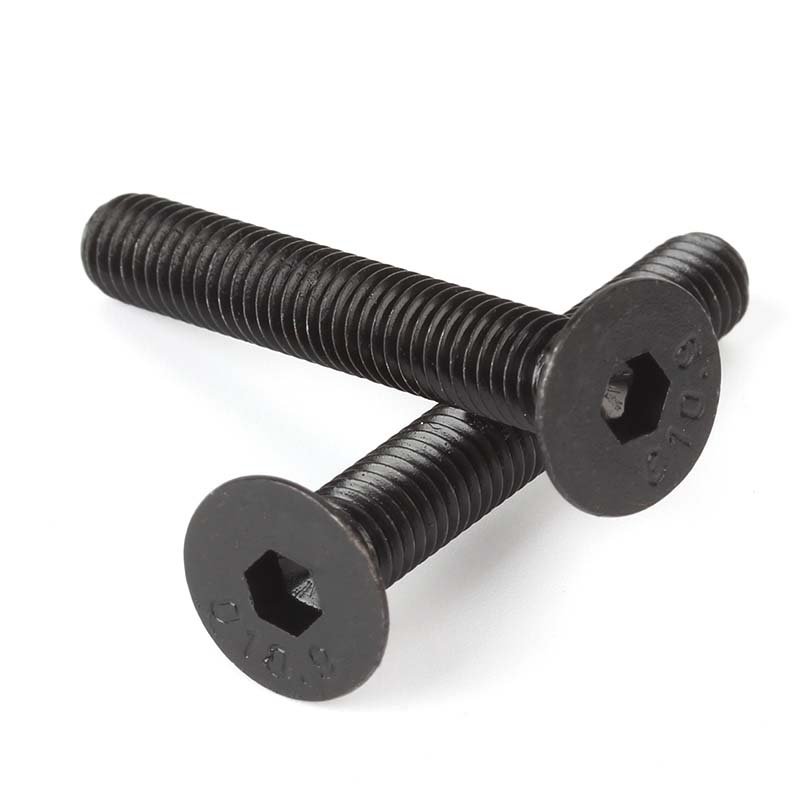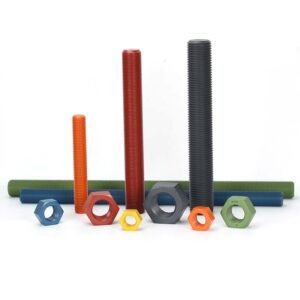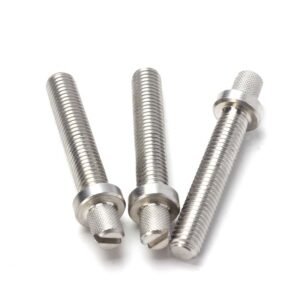Black Oxide Surface Treatment for Carbon Steel Fasteners
Black Oxide Fasteners: An Essential Guide in Carbon Steel Applications
Black oxide is a widely used surface treatment in the fastener industry, particularly suitable for carbon steel fasteners. This coating method enhances corrosion resistance, provides a uniform appearance, and adds minimal dimensional change, making it ideal for precision components. In this comprehensive guide, we’ll explore the black oxide process in detail, from its technical background to performance characteristics, applications, pros and cons, and industry standards.
What is Black Oxide? – Overview and Technical Background
Definition:
Black oxide, also known as blackening, is a chemical conversion coating formed by a reaction between iron in carbon steel and an oxidizing agent. The process results in a black-colored magnetite (Fe₃O₄) layer that offers mild corrosion resistance and improved aesthetics.
Technical Background:
The black oxide process has its origins in industrial applications dating back over a century. Due to its ease of application and cost-efficiency, it became popular in treating various metal parts, especially in the fastener industry. Today, black oxide is recognized for its uniform finish and compatibility with supplementary oil treatments that enhance corrosion resistance in fasteners.
Common Applications and Suitable Fastener Types
The black oxide finish is well-suited for a broad range of fasteners and industries:
| Suitable Fastener Types | Common Application Fields |
|---|---|
| Bolts | Automotive |
| Nuts | Machinery & Equipment |
| Washers | Construction |
| Screws | Electronics & Electrical Devices |
| Self-tapping Screws | Aerospace (non-critical usage) |
Black Oxide Coated Fasteners: Key Performance Characteristics
| Performance Aspect | Description |
|---|---|
| Corrosion Resistance | Offers mild protection; enhanced when post-treated with oil or wax. |
| Aesthetic Appearance | Matte to semi-gloss black finish; smooth and consistent. |
| Surface Hardness | Does not significantly increase hardness but maintains material strength. |
| Conductivity | Retains electrical conductivity; ideal for electronic applications. |
| Dimensional Stability | Minimal buildup; perfect for precision mating parts. |
Black Oxide Process: Step-by-Step Overview
The typical black oxide process includes the following stages:
- Pre-Treatment:
- Degreasing or alkaline cleaning
- Acid pickling to remove rust and scale
- Thorough rinsing with water
- Oxidization (Main Coating Stage):
- Immersion in hot alkaline oxidizing solution (usually at 135°C to 145°C)
- Reaction time varies from 10 to 30 minutes
- Post-Treatment:
- Rinsing to remove any leftover salts
- Immersion in oil, wax, or other sealants to enhance corrosion resistance
- Drying or baking the parts for final finish
Advantages and Limitations of Black Oxide Coating
Benefits:
- Cost-effective and scalable for mass production
- Uniform, non-reflective black finish
- Environmentally safer than some heavy-metal plating methods
- Minimal effect on fastener dimensions
- Improves lubricity when combined with oil
Drawbacks:
- Limited corrosion resistance without post-treatment
- Not suitable for outdoor or high-humidity environments without additional coatings
- Requires high temperature and precise control during processing
Comparisons with Other Coatings
| Coating Type | Key Benefit | Ideal Use Case |
|---|---|---|
| Black Oxide | Cost-effective appearance | Indoor or controlled environments |
| Zinc Electroplating | Superior corrosion resistance | Outdoor fasteners, automotive |
| Phosphate Coating | Good paint adhesion | Primer layer for further coatings |
| Anodizing (Aluminum) | Aesthetic + surface protection | Decorative applications |
Compared to zinc plating, black oxide is less corrosion-resistant but offers a smoother appearance without a thick buildup, benefiting threaded parts.
Standards and Industry Certifications
Black oxide treatments for carbon steel fasteners are typically guided by these standards:
- ISO 11408: Fasteners – Black oxide coatings
- ASTM D769 or MIL-DTL-13924 Class 1: Military-grade black oxide specifications
- RoHS Compliant – Free from hazardous substances like hexavalent chromium
Environmental and Safety Considerations
Most modern black oxide processes avoid using dangerous chemicals, ensuring workplace and environmental safety. However, attention must be given to ventilation and wastewater disposal due to high alkalinity. Post-treatments used (such as oil) are typically biodegradable and non-toxic.
Cost and Economic Considerations
| Cost Factor | Comparison |
|---|---|
| Initial Setup | Low-to-moderate investment |
| Per-unit Processing Cost | Low |
| Maintenance Cost | Minimal post-treatment care |
| Value | High for mass applications |
Black oxide is one of the most economically favorable coating options for indoor or low-stress environments, maintaining a good balance of aesthetics, minimal dimensional impact, and conductivity.
Conclusion
At Flybear Fastener, we continuously strive to deliver innovation and quality in everything we offer. Our range of fastener products features various surface treatments, including black oxide, optimized for different industrial needs. We are dedicated to providing end-to-end solutions, from custom OEM specifications to efficient global delivery of carbon steel fasteners treated with durable and cost-effective finishes.
We uphold the principle of “Quality First, Customer Foremost” and aim to stand as your long-term supply-chain partner. Explore our wide selection of coatings, materials, and designs. Don’t hesitate to contact us for expert consultations or to request a quote tailored to your requirements.








